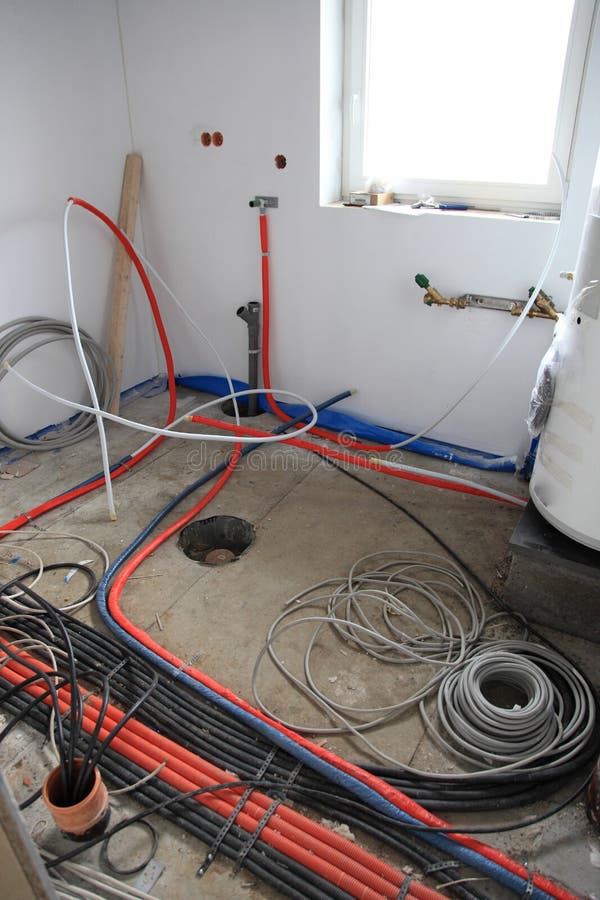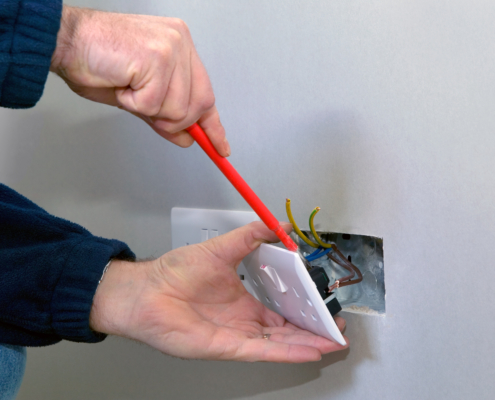Customized BRE Electrical Solutions for Residences and Organizations
Customized BRE Electrical Solutions for Residences and Organizations
Blog Article
The Ultimate Overview to Electrical Installment: Tips and Methods for a Safe and Reliable Home Wiring System
In the world of home upkeep, couple of facets are as critical yet usually overlooked as the electrical wiring system. By discovering the subtleties of electric security procedures and energy-saving methods, this detailed guide will lose light on the intricacies of home wiring, empowering people to take fee of their family's electrical infrastructure.
Understanding Electric Precaution
To guarantee the safety and security of both individuals and residential or commercial property, understanding and implementing appropriate electric security procedures is extremely important in any kind of home electrical wiring task. It is essential to perform an extensive examination of the electrical system prior to beginning any electrical wiring project to identify prospective dangers or concerns that need to be attended to.
Moreover, using the suitable devices and tools is essential for preserving safety throughout electric installments. Insulated gloves, voltage testers, and protective eyewear are a few of the fundamental safety and security equipment that need to be put on to stop electrical shocks or mishaps. It is likewise crucial to de-energize circuits prior to dealing with them and to identify all circuits and breakers clearly to avoid confusion.

Important Devices for Home Circuitry
Making sure the correct implementation of electrical safety procedures in home electrical wiring tasks entails utilizing a particular set of necessary devices designed to facilitate the installation process efficiently and safely. Some of the key tools required for home electrical wiring jobs include a voltage tester for inspecting real-time cables, wire pole dancers for getting rid of insulation from cables, a cord cutter for precisely cutting wires to length, a screwdriver established for securing electric components, electric tape for insulation and safeguarding links, a wire ripper for stripping cable sheathing, and a multimeter for measuring voltage, existing, and resistance.
Step-by-Step Electric Installment Overview
Starting an electric installment project requires thorough preparation and adherence to safety guidelines. Before beginning any kind of job, guarantee you have a thorough strategy laying out the format of the electric system, including the placement of electrical outlets, buttons, and fixtures. Take into account the power needs of each device to identify the suitable cord scale and circuit breaker dimensions.
The very first step in the setup process is to turn off the power supply to the area where you will certainly be working. Use a voltage tester to validate that the circuits are de-energized before touching any cords. Next off, carefully remove existing fixtures or outlets and detach the wires.
When installing new circuitry, run cable televisions via wall surfaces and ceilings, protecting them in area with suitable installations. Follow regional structure codes and maker instructions for appropriate cord installation and connections. BRE Electrical Melbourne. Make certain to label cables for simple recognition and future maintenance

Troubleshooting Common Wiring Issues
Having completed the installation procedure as laid out in the previous subtopic, repairing usual circuitry issues is a vital skill for guaranteeing the safety and capability of your electric system. One usual concern is a tripped circuit breaker, frequently brought on by overloaded circuits or a brief circuit. To repair this, situate the breaker panel, determine the tripped breaker by looking for the one not totally in the "on" setting, try this and reset it by flipping it completely to "off" and then back to "on." One more common trouble is a malfunctioning outlet, characterized by no power or intermittent power supply. Make certain the outlet is not controlled by a button, then make use of a voltage tester to look for power. If there is no power, turn off the circuit, inspect the electrical wiring connections for any kind of loose or damaged cords, and replace the electrical outlet if required. Continually flickering lights can suggest loose circuitry connections or an overloaded circuit. To resolve this, check and tighten all cord connections in the impacted fixtures and buttons and redistribute the lots on the circuit to balance the electric need. Consistently checking and quickly addressing these typical circuitry issues will certainly maintain the safety and security and efficiency of your home electrical system.
Tips for Energy-Efficient Electrical Systems
For ideal power efficiency in electrical systems, carrying out clever techniques and using energy-saving modern technologies is critical. One vital tip for accomplishing an energy-efficient electric system is to upgrade to LED lighting. LED light bulbs take in substantially less energy than traditional incandescent light bulbs and have a longer life-span, making them a cost-effective option in the future. Furthermore, installing programmable thermostats can help manage home heating and cooling systems, minimizing energy waste when no one is home. Another strategy is to invest in energy-efficient appliances that are power STAR licensed, ensuring they fulfill high criteria for power effectiveness. Proper insulation and sealing of windows, doors, and electric outlets can additionally protect against power loss, eventually minimizing the workload on electrical systems. Lastly, consider integrating sustainable power resources like photovoltaic panels to additional decrease reliance on conventional power grids. By incorporating these energy-efficient tips and technologies, property owners can not just get redirected here save money on their power expenses but likewise lower their ecological influence.
Verdict
To conclude, applying appropriate precaution, utilizing crucial tools, complying with a detailed installation overview, troubleshooting typical problems, and including energy-efficient tips are critical for a secure and efficient home wiring system. By adhering to these techniques, house owners can guarantee the durability and capability of their electric installments. It is essential to prioritize safety and security and performance when it concerns electrical operate in order to stop potential hazards and to maintain a dependable electrical system in the home.
Report this page